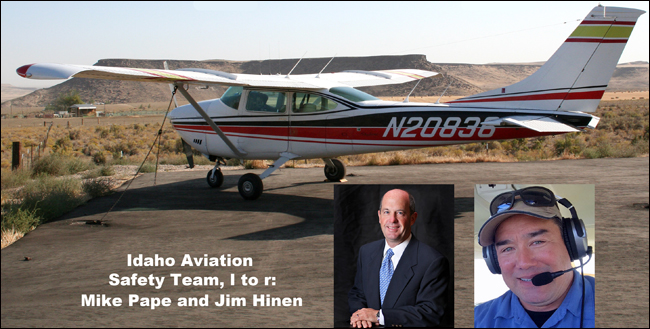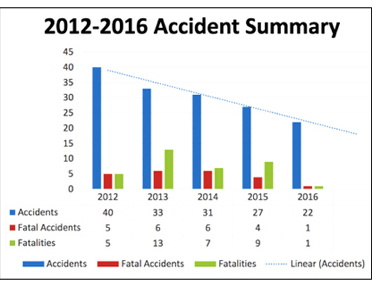

Division of Aeronautics improves safety of Idaho skies
![]()
Prompted by a mid-air collision in 2013 at a popular backcountry airstrip that resulted in a fatality of an 8-year-old boy, the Idaho Division of Aeronautics initiated their "Aviation Safety Initiative" program to improve aviation safety and set a five-year goal of reducing the state general aviation accident rate by half. The goal is already being ac complished.
complished.
General aviation flying in Idaho can be challenging. Statistics indicate that Idaho has traditionally experienced a higher per-capita accident rate than neighboring states. When the National Transportation Safety Board (NTSB) investigated the 2013 accident, Idaho's Division of Aeronautics was politely chastised for allowing unrestricted and unsupervised large fly-in events that naturally attract many inexperienced aviators, many arriving from out of state with little knowledge of the challenging Idaho flying environment.
So, Idaho began hosting a series of trainings focusing on aviation safety best practices.
Here are a few of those items:
- Aircraft Owners & Pilots Association (AOPA) Rusty Pilot Seminars
- AOPA Collision Avoidance and Non-Towered Flight Operation Seminars
- Pilot Safety Seminars featuring FAA Safety Team
- Certificated Flight Instructor Roundtables featuring nationally recognized aviation experts
- Annual Safety Standdown event
So far, the Idaho Division of Aeronautics has reached about 600 pilots with these safety trainings.
The Division of Aeronautics also began to publish and promote the annual Idaho Aviation Accident Scorecard and analyze the NTSB accident report to determine causes and trends that became the focus of subsequent safety trainings. Here is a link to the most recent report:
The report includes yearly comparisons and summaries, total number of general aviation accidents, fatal accidents, fatalities, pilot qualifications, and class of aircraft.
"With this data, we can identify a particular area of emphasis when planning workshops and trainings for the next year," said Idaho Division of Aeronautics' Jim Hinen, who leads the safety/education unit.
"In 2013, we were experiencing higher-than-average accidents and fatalities," explained Division of Aeronautics Administrator Mike Pape. "We set a goal of reducing the accident rate by half over the next five years, through education and information."
Pape said this would be accomplished by:
Education: offering an annual safety standdown program, AOPA safe pilot programs and seminars at fly in events
Information: publishing standard operating procedures at five of our most popular airstrips after noticing the pilot involved in the 2013 accident had very little knowledge of the specifics and hazards of operating at the Johnson Creek Airstrip. They also began publishing the IAASC report that same year, and a "Welcome to Flying Idaho" brochure that added safety information to a chamber of commerce type welcome message. 
"By early 2017, we had nearly achieved that goal in three years," said Pape. "By early 2018, we'd done it." See the chart below:
- Aircraft accidents decreased
- Fatal accidents decreased
- Fatalities resulting from aircraft accidents decreased
It takes a couple years for investigations to be completed; thus the reason for the reporting lag.
The Division also unveiled the Airport App for pilots in 2013, providing information for pilots for each backcountry destination they are flying to. The Aviation Airport App was unveiled in 2013, with a few subsequent revisions to refine the system as pilots began using the App.
The App has been downloaded more than 4,600 time so far.
They also recently began expanding the annual aerospace career education academy for teens to multiple sites throughout the state, offering a better opportunity to engage a wider swath of future pilots with the aviation safety message at an earlier age.
Published 07-13-18